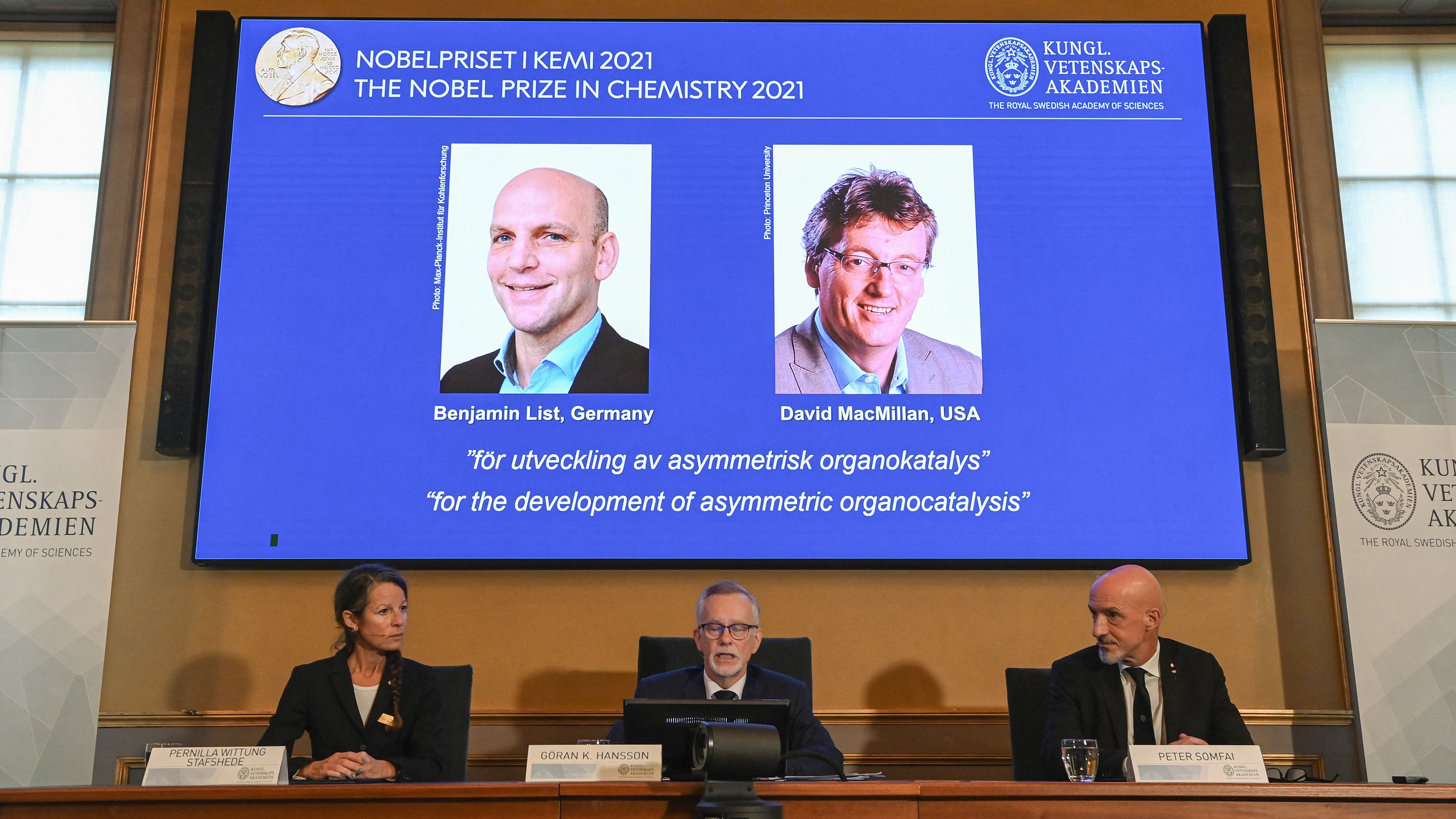Nobel Prize in chemistry given to duo whose method solves 'mirror-image problem' in chemistry
The researchers pioneered a totally new way of producing drugs.

The 2021 Nobel Prize in chemistry has been awarded to two scientists who developed new tools for building mirror-image molecules — enabling new drugs to be created in a more environmentally friendly way.
The researchers Benjamin List, of the Max Planck Institute for Coal Research, and David MacMillan, of Princeton University, were awarded the prize "because in 2000 they, independent of each other, developed a third type of catalysis," the Nobel Committee wrote in a statement. Catalysts, which are substances that can both control and accelerate chemical reactions, are important tools in chemistry. For a long time scientists believed that there were only two types of catalysts: metals and enzymes. But the researchers created a third process called asymmetric organocatalysis that uses small organic molecules as catalysts, which opened up entirely new avenues for building molecules.
"Organic catalysts can be used to drive multitudes of chemical reactions," the Royal Swedish Academy of Sciences said in the statement. "Using these reactions, researchers can now more efficiently construct anything from new pharmaceuticals to molecules that can capture light in solar cells."
Related: 8 chemical elements you never heard of
Chemists create new molecules by chaining together tiny chemical building blocks, but controlling this bonding process is a tricky task. Catalysts are important in guiding these reactions, but even they have their limitations. For instance, conventional catalysts are often unable to prevent a common situation that arises when a single process to build a desired molecule produces one of two possible molecules — each the mirror image of the other, like left and right hands. These mirror-image, or chiral, molecules can have vastly different properties and interactions with the body. For instance, the mirror-image molecule of levomethamphetamine — which is used in nasal inhalers to relieve a stuffy nose — is dextromethamphetamine, both a therapeutic used for ADHD as well as the illicit and highly addictive street drug.
But the asymmetric organocatalysis method developed by List and MacMillan — using tiny organic molecules as the catalysts — sidesteps this mirror-image problem, enabling chemists to select the exact "handedness" of the molecule they want to create. This vastly reduces waste, and the subsequent cost, in the production of vital pharmaceuticals.
Organic catalysts are made by attaching common active chemical elements — like oxygen, nitrogen, sulfur and phosphorus — onto a stable framework of carbon atoms. This process is both cheap and environmentally friendly.
Sign up for the Live Science daily newsletter now
Get the world’s most fascinating discoveries delivered straight to your inbox.
"This concept for catalysis is as simple as it is ingenious, and the fact is that many people have wondered why we didn't think of it earlier," Johan Åqvist, chair of the Nobel Committee for Chemistry, said in the statement.
The award comes with a prize of 10 million Swedish kronor ($1.15 million) to be shared equally between the two laureates.
Originally published on Live Science.

Ben Turner is a U.K. based staff writer at Live Science. He covers physics and astronomy, among other topics like tech and climate change. He graduated from University College London with a degree in particle physics before training as a journalist. When he's not writing, Ben enjoys reading literature, playing the guitar and embarrassing himself with chess.









